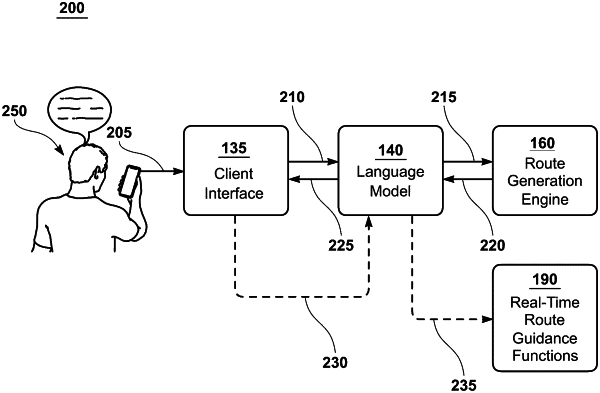| CPC G01C 21/3608 (2013.01) [G01C 21/3438 (2013.01); G01C 21/3484 (2013.01); G01C 21/3617 (2013.01); G06Q 30/0206 (2013.01); G06Q 50/30 (2013.01); G10L 15/183 (2013.01)] | 26 Claims |

|
1. A method implemented via execution of computing instructions by one or more processors and stored on one or more non-transitory computer-readable storage devices, the method comprising:
providing a navigation application comprising:
a client interface that facilitates interactions between a language model and a vehicle operator; and
a route generation engine that is configured to compute vehicle routes;
collecting operator interaction data corresponding to interactions between the vehicle operator and the language model;
determining, by the language model, one or more operator route preferences based, at least in part, on the operator interaction data;
initiating a communication exchange between the language model and the route generation engine to identify a personalized vehicle route based, at least in part, on the operator route preferences determined by the language model; and
outputting, via the navigation application, the personalized vehicle route for the vehicle operator,
wherein:
the navigation application is a ride hailing application that enables the vehicle operator to accept requests for transporting passengers;
the personalized route is utilized in connection with transporting a passenger from an origin location to a destination location;
the one or more operator route preferences include a revenue preference of the vehicle operator;
the route generation engine generates a plurality of candidate vehicle routes based, at least in part, on the origin location and the destination location identified by the language model;
the route generation engine communicates the plurality of candidate vehicle routes to the language model; and
the language model selects the personalized driving route from the plurality of vehicle candidate routes based, at least in part, on the operator route preferences.
|